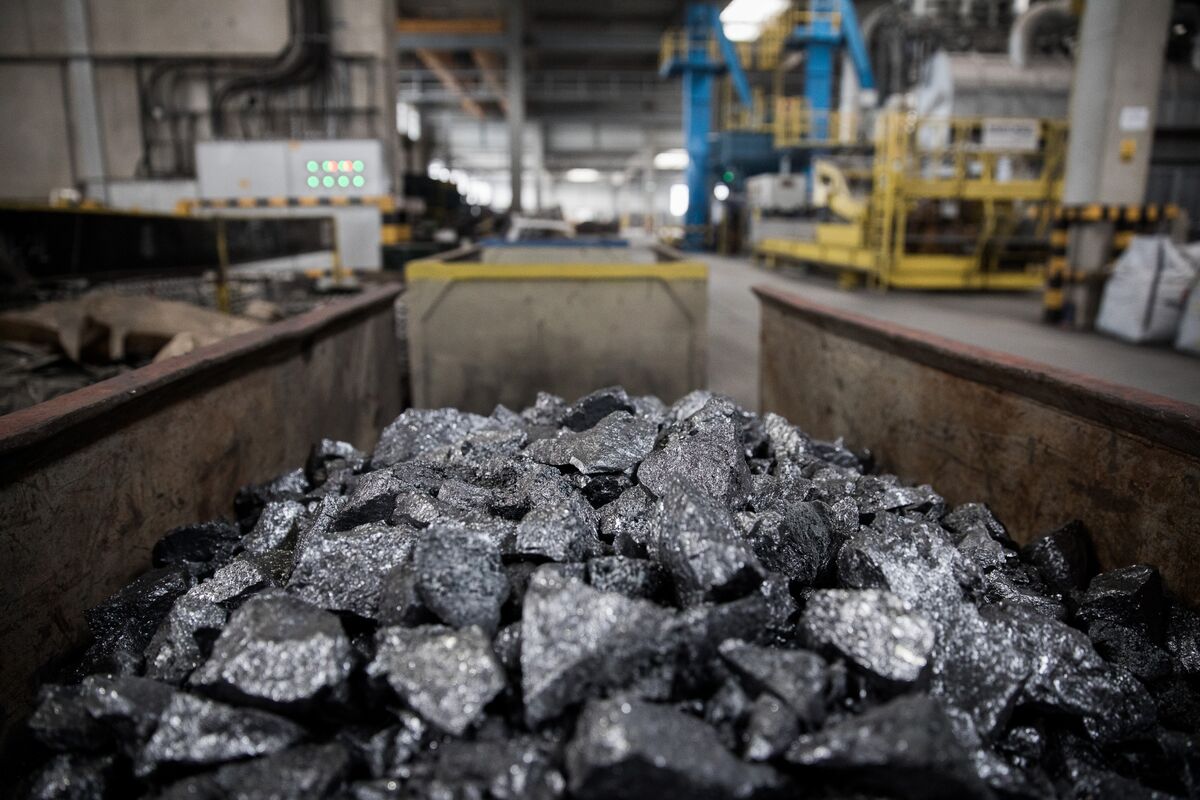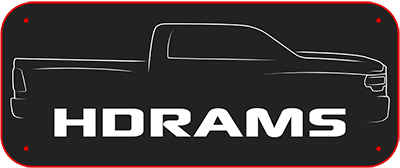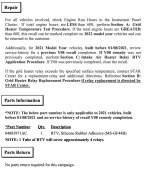I have read the thing three times and have a hard time following it. Maybe I am just stupid in my old age. Frankly it is poorly written IMHO. So which version of the relay gets hot?Yes.
If you guys would read the actual tech document from Chrysler you noticed that there are two versions of the relay and they have two different problems.
Both problems can lead to the same fiery conclusion.
Ram Heavy Duty Forum
You are using an out of date browser. It may not display this or other websites correctly.
You should upgrade or use an alternative browser.
You should upgrade or use an alternative browser.
2021 Stop Sale on certain diesels incoming (intake air heater relay). - Recall Y76 REFRESHED OCT 2021
- Thread starter Epsilon Plus
- Start date
rfullen280
Active Member
- Joined
- Jul 5, 2021
- Messages
- 328
- Reaction score
- 161
Is your vehicle a 2021 or 2022?
When was it built (look on the door sticker for a 6 digit code. First 2 are Month, Second 2 are Day, Third 2 are Hour).
If it was built before 01/08/2021 - it should get RTV applied (let the dealer do it). Yes, it's written poorly. The "hours" exemption is for 2022 vehicles with greater than 600 hours of operation.
Here's the PREVIOUS Y08 recall procedure. https://static.nhtsa.gov/odi/rcl/2021/RCRIT-21V163-0593.pdf
It appears they're temp checking everything, but I am GUESSING that's for CYA functions only.
The part in the PREVIOUS Y08 Procedure was superseded by a part ending in AB (https://www.moparpartsgiant.com/parts/mopar~68444169aa.html) but I do not know what date that happened. My guess is that they either added the tape to the back, or fully sealed the AB versions.....
I haven't found yet, a date code that says when the version switched from AA to AB.
I did, however, fire up my grid heater, and use an infrared thermometer to see if the AB version (what I have installed on my June 2021 built 2500) got hot. It did not. So I'm not disconnecting anything. That is my personal choice, and nobody is obligated to do the same thing.
Ultimately, contact your dealer, have them inspect your vehicle, but, you can ascertain some knowledge about it by looking under your own hood (the relay is on the passenger side, just under the intake tube).
I worked on aviation electronics for 25 years. I've seen many high power relays fail, and many low power ones too. Both mechanical, and solid state. Material defects do happen, Design defects do happen. Temperature in an electrical system can be used to evaluate failure, as resistance or poor connections increase temperature...
So the good news is Stellantis or whoever they are, has figured out a threshold of temperature, that failure can be attributed to.
Combra6589
Well-Known Member
- Joined
- Jul 12, 2021
- Messages
- 267
- Reaction score
- 390
No. That’s for relays that pass initial test. Mine failed and my dealer reported it to stellantis/star and now have to wait for engineers to get back.That is frustrating for sure. Especially as it seems that possibly you could be good to go depending on what the inspection and testing finds. And I think the PDF says one of the fixes is to spread that insulating compound around and over the back of the relay. Is that compound really unavailable until February??
rfullen280
Active Member
- Joined
- Jul 5, 2021
- Messages
- 328
- Reaction score
- 161
Interesting that you have an AB in a 2020. I wonder if it was replaced on a previous recall.For anyone so inclined, here's the part number for the relay solenoid in my 2020 truck:
68393978AB
You would need the nuts (6035723) and make or replace the battery cable to the relay.
Still looking for the battery cable PN.
rfullen280
Active Member
- Joined
- Jul 5, 2021
- Messages
- 328
- Reaction score
- 161
Correct, for relays that pass the initial, AND, are on vehicles before Jan 2021.No. That’s for relays that pass initial test. Mine failed and my dealer reported it to stellantis/star and now have to wait for engineers to get back.
Will_T
Well-Known Member
Confused as to what it says about those that pass and are after Jan 2021 and have the AA relay with the tape on the back?Correct, for relays that pass the initial, AND, are on vehicles before Jan 2021.
Mine was built in March/April 2021, has the AA with the tape.
rfullen280
Active Member
- Joined
- Jul 5, 2021
- Messages
- 328
- Reaction score
- 161
I linked the thing above. If it passes...you just go on about your day from what I see. Here it is - not written very logically....Confused as to what it says about those that pass and are after Jan 2021 and have the AA relay with the tape on the back?
Mine was built in March/April 2021, has the AA with the tape.
Attachments
toyboy1980
Member
- Joined
- May 11, 2021
- Messages
- 85
- Reaction score
- 69
I have the same exact thing. I’ve got an appointment next Tuesday. I’ll update with results/outcome.Confused as to what it says about those that pass and are after Jan 2021 and have the AA relay with the tape on the back?
Mine was built in March/April 2021, has the AA with the tape.
rfullen280
Active Member
- Joined
- Jul 5, 2021
- Messages
- 328
- Reaction score
- 161
No thinking about it I don't think the concern is anything shorting to ground, I think it's the silicone itself in the solid-state relay getting too hot and then combusting. Because if it was a concern about shorting to ground the fix would just be add fusible link between battery and relay. Does that make sense?
This sounds useful, if nothing else than to provide info and peace of mind. Did you run multiple tests, or just one? If multiple, was there an accumulation in temperature?Thanks Jimmy07! That makes more sense.
So, yes, I can confirm, tested my Grid Heater (Cold Start Aid) in my driveway, with an infrared thermo... and ... no defect. Whew.
Many thanks
Interesting that you have an AB in a 2020. I wonder if it was replaced on a previous recall.
Look at the PN again. My truck is a 2020 with the old style (round) relay solenoid.
rfullen280
Active Member
- Joined
- Jul 5, 2021
- Messages
- 328
- Reaction score
- 161
Ah, yes, an entirely different type of part number/style eh? Interesting. Is it a elecromechanical or a solid state like the current one?Look at the PN again. My truck is a 2020 with the old style (round) relay sole
Edit - round, electromechanical…. I get it. I’m in a lecture, trying to pay attention to too many things at once.
Last edited:
No thinking about it I don't think the concern is anything shorting to ground, I think it's the silicone itself in the solid-state relay getting too hot and then combusting. Because if it was a concern about shorting to ground the fix would just be add fusible link between battery and relay. Does that make sense?
I believe those blocks on the battery strap where it's connected ARE fusible links, making your assumptions about the relay itself combusting reasonable.
Apparently it doesn't draw enough current on failure to cause the fuse to open.
rfullen280
Active Member
- Joined
- Jul 5, 2021
- Messages
- 328
- Reaction score
- 161
Ya, that’s scary as heck…. When you think about it. I wonder if the guy that picked the “flammable RTV and plastic” is feeling the “heat” today…I believe those blocks on the battery strap where it's connected ARE fusible links, making your assumptions about the relay itself combusting reasonable.
Apparently it doesn't draw enough current on failure to cause the fuse to open.
Understanding Solid-State Relays
Solid-state relays (SSR) are able to perform many of the same tasks as electromechanical relay (EMR)s. The main difference is that SSRs have no moving mechanical parts within it.
Thermal considerations and heat sinking
Thermal management is a fundamental consideration in the design and use of SSRs because of the contact dissipation (typically 1W per amp). Therefore, it is vital that sufficient heat sinking is provided, otherwise the life and switching reliability of the SSR will be compromised. In order to properly size a heat sink, one has to consider what goes into getting the thermal resistance numbers in order to understand what it means.
Speaking as an EE and integrated circuit designer, I’m thinking they’ve got a problem in the silicon. It’s not the bare bus bars shorting to chassis. The relay is in a plastic housing to isolate it. Now that could get filled with water or debris and cause conduction, for sure. Bare metal where it doesn’t need to be is just dumb. Somebody screwed up or penny-pinched.
They are getting conduction through the silicon when it shouldn’t happen and that’s due to some breakdown or electromigration issue. My guess, given the obvious high current draw of the heater, is the latter. Metal is moving around inside that relay and causing it to short out and heat up. Taking its temperature isn’t going to fix that. Classic band-aid approach from the automakers.
This recall ain’t over.
They are getting conduction through the silicon when it shouldn’t happen and that’s due to some breakdown or electromigration issue. My guess, given the obvious high current draw of the heater, is the latter. Metal is moving around inside that relay and causing it to short out and heat up. Taking its temperature isn’t going to fix that. Classic band-aid approach from the automakers.
This recall ain’t over.
rfullen280
Active Member
- Joined
- Jul 5, 2021
- Messages
- 328
- Reaction score
- 161
Oh, I agree. I think the temperature taking is for risk management. The hot ones get changed first. Triage if you will. The cold ones... are on the list, but do you know anyone that can make 180,000+ Solid State Relays anytime soon?Speaking as an EE and integrated circuit designer, I’m thinking they’ve got a problem in the silicon. It’s not the bare bus bars shorting to chassis. The relay is in a plastic housing to isolate it. Now that could get filled with water or debris and cause conduction, for sure. Bare metal where it doesn’t need to be is just dumb. Somebody screwed up or penny-pinched.
They are getting conduction through the silicon when it shouldn’t happen and that’s due to some breakdown or electromigration issue. My guess, given the obvious high current draw of the heater, is the latter. Metal is moving around inside that relay and causing it to short out and heat up. Taking its temperature isn’t going to fix that. Classic band-aid approach from the automakers.
This recall ain’t over.

Silicon’s 300% Surge Throws Another Price Shock at the World
A metal made from the second-most abundant element on Earth has become scarce, threatening everything from car parts to computer chips and throwing up another hurdle for the world economy.
The Silicone Shortage Explained
There isn’t a simple explanation for the global shortage of silicone rubber. It’s about changes in supply and demand, pandemic-related problems with shipping/logistics, manpower, and raw materials. If you’re concerned about where the market is headed, it might help to consider the [...]
I wonder what the rated current draw at 12V is for the grid heater itself? Did a couple searches, saw between 80-110 amps. That's not a small piece of silicon to drive that.

Grid Heater
Operation At the time you turn the ignition key to the ON position the PCM/ECM looks at the IAT (Intake Air Temperature) temperature and determines if the manifold is cold enough to need pre-heating. Typically this occurs when temperatures are below 55-65*F. You'll notice that the battery voltage...
mopar1973man.com
That’s a decent write up. Notable is “inrush” current for lamp loads (a heater is not different. Incandescent lamps are heaters). Resistance has a positive temperature coefficient. Cold resistance can be a lot less than hot resistance, so when you first turn it on it draws a lot more. This is why light bulbs almost always blow when you first switch them on.
Understanding Solid-State Relays
Solid-state relays (SSR) are able to perform many of the same tasks as electromechanical relay (EMR)s. The main difference is that SSRs have no moving mechanical parts within it.www.automation.com
Thermal considerations and heat sinking
Thermal management is a fundamental consideration in the design and use of SSRs because of the contact dissipation (typically 1W per amp). Therefore, it is vital that sufficient heat sinking is provided, otherwise the life and switching reliability of the SSR will be compromised. In order to properly size a heat sink, one has to consider what goes into getting the thermal resistance numbers in order to understand what it means.
They messed up EM (electromigration) on this relay. I’m almost willing to bet.
rfullen280
Active Member
- Joined
- Jul 5, 2021
- Messages
- 328
- Reaction score
- 161
So, as an EE, could you calculate the heat sink requirements for a 110 Amp, 12V SSR?That’s a decent write up. Notable is “inrush” current for lamp loads (a heater is not different. Incandescent lamps are heaters). Resistance has a positive temperature coefficient. Cold resistance can be a lot less than hot resistance, so when you first turn it on it draws a lot more. This is why light bulbs almost always blow when you first switch them on.
They messed up EM (electromigration) on this relay. I’m almost willing to bet.
How to select the Heat Sink for SSRs and SSMs?
Through this article you will learn how does the heat sink/radiator work? What is the heat calculation formula of the solid state relay/module? How to select a suitable heat sink for solid state relays and solid state modules?...
Truck is a 2021 built Feb 28 of this year. Relay is AAIs your vehicle a 2021 or 2022?
When was it built (look on the door sticker for a 6 digit code. First 2 are Month, Second 2 are Day, Third 2 are Hour).
If it was built before 01/08/2021 - it should get RTV applied (let the dealer do it). Yes, it's written poorly. The "hours" exemption is for 2022 vehicles with greater than 600 hours of operation.
Here's the PREVIOUS Y08 recall procedure. https://static.nhtsa.gov/odi/rcl/2021/RCRIT-21V163-0593.pdf
It appears they're temp checking everything, but I am GUESSING that's for CYA functions only.
The part in the PREVIOUS Y08 Procedure was superseded by a part ending in AB (https://www.moparpartsgiant.com/parts/mopar~68444169aa.html) but I do not know what date that happened. My guess is that they either added the tape to the back, or fully sealed the AB versions.....
I haven't found yet, a date code that says when the version switched from AA to AB.
I did, however, fire up my grid heater, and use an infrared thermometer to see if the AB version (what I have installed on my June 2021 built 2500) got hot. It did not. So I'm not disconnecting anything. That is my personal choice, and nobody is obligated to do the same thing.
Ultimately, contact your dealer, have them inspect your vehicle, but, you can ascertain some knowledge about it by looking under your own hood (the relay is on the passenger side, just under the intake tube).
I worked on aviation electronics for 25 years. I've seen many high power relays fail, and many low power ones too. Both mechanical, and solid state. Material defects do happen, Design defects do happen. Temperature in an electrical system can be used to evaluate failure, as resistance or poor connections increase temperature...
So the good news is Stellantis or whoever they are, has figured out a threshold of temperature, that failure can be attributed to.
Users who are viewing this thread
Total: 1 (members: 0, guests: 1)


